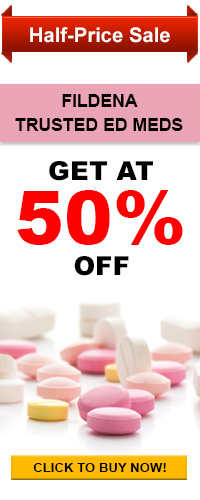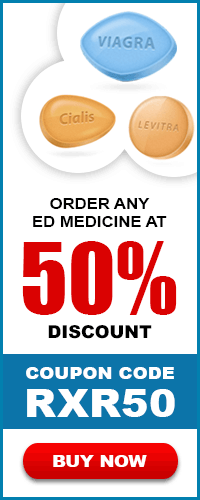Generic Name: Arginine Hydrochloride
Dosage Form: Injection, Solution
Intravenous infusion of R-Gene 10 often encourages a conspicuous increase in plasma level of human growth hormone (HGH) in reference with undamaged pituitary actions. The increase in general curtailed or vanished in patients along with deterioration of this function. The solution generally activates a conspicuous increase in the plasma level of human growth hormone (HGH) in reference with intact pituitary function.
Drug Description:
Each 100 mL of R-Gene 10 (Arginine Hydrochloride Injection) which is used for intravenous use encompasses 10 g of L-Arginine Hydrochloride, Water for Injection, equivalent to a 10% solution. L-arginine is a naturally occurring amino acid.
R-Gene 10 (arginine hydrochloride injection) is hypertonic (950 mOsmol/liter) and encompasses 47.5 mEq of chloride ion per 100 mL of formula. The pH is adjusted to 5.6 (5.0-6.5) with arginine base or hydrochloric acid. The solution is supplied as a 300 mL fill in 500 mL glass containers. Preservative Free and could be discarded in any unused portion.
Indications and Uses:
R-Gene 10 is indicated as an intravenous impetus to the pituitary for releasing human growth hormone in patients. This is done when the measurement of pituitary reserve for HGH could be of diagnostic usefulness. The solution can also be used as a diagnostic aid in such conditions as postsurgical craniopharyngioma, panhypopituitarism, pituitary dwarfism, hypophysectomy, pituitary trauma, acromegaly, chromophobe adenoma, gigantism, problems of growth and stature.
If the patients do not respond to R-Gene 10 (Arginine Hydrochloride Injection) in the first test itself, the patient is suggested to be tested once again to confirm the negative result out of the drug. A second test can be performed after delayed period of one day. It has been noticed that patients who respond positively to R-Gene 10 do not respond to insulin and vice versa. The rates of false positive responses are approx. 32%, and the rate of false negatives responses are approx. 27%.
Dosage:
Adult Dosage: The recommended adult dose is approx. 30 g arginine hydrochloride (300 mL of drug) executed by intravenous infusion over 30 minutes. The total dose should strictly not exceed or cross 30 g of arginine hydrochloride.
Pediatric Dosage: The recommended pediatric dose is 0.5 g/kg arginine hydrochloride (5 mL/kg drug) executed by intravenous infusion over 30 minutes. The total dose should strictly not exceed or cross 30 g of arginine hydrochloride.
The drug is found as a ready-to-use solution for patients weighing 60 kg (132 lbs) or more and should not be further diluted. For pediatric patients weighing 59 kg (130 lbs) or less a dose must be placed in a separate container. Follow the preparation instructions before administration of the drug. The shorter the time of consumption the lower is the possibility of duplication of organisms inadvertently introduced.
Overdose:
An over dosage may result in transient metabolic acidosis with hyperventilation, which could also result to death. In many cases the acidosis will self-compensate and main loss will rebound to normal in reference with accomplishment of the immersion. If the condition persists, the deficit should be understood and appropriately calculated dose of an alkalizing agent.
Contradiction:
The sedation of R-Gene 10 (arginine hydrochloride injection) is contraindicated in people suffering from famous hypersensitivity to any ingredient in this product.
Using Guide of the Drug:
- The solution is recommended to be used only if solution is clear and seal is intact manner. Carefully examine and observe the bottle for evidence of damage before getting it into any kind of use, e.g., small cracks, dents in seal, or areas of dried powder on exterior. Do not administer contents if such damage is found on the bottle.
- Abolish plastic flip off lid from bottle to disclose rubber stopper, carefully that you do not contaminate the target site of the stopper with fingers, hair, clothing, etc.
- With shut-off fastener sealed, abolish sterility defender from spike of administration set and immediately put up set with a quick push into center of stopper with bottle upright on table.
- Gently move the bottle upside down so that fluid automatically establishes level in drip chamber and to check for vacuum by observing increasing filtered air bubbles. Discard bottle if there is no vacuum or if the solution is not clear.
Storage:
Exposure of pharmaceutical products to heat should be minimized or avoided completely. Avoid excessive heat reaching to the drug. It is recommended that the product is to be stored at room temperature i.e. 25°C; however, brief exposure up to 40°C does not adversely affect the product. Solution that has been frozen must not be used and is suggested to be disposed using proper disposal practice.
Side Effects:
Some non-definite side effects include: nausea, nose irritation, vomiting, headache, flushing, numbness and local venous tenderness were noted in approx. 3% of the patients all over.
Eruption giving burn-like reaction and/or skin necrosis needs surgical intervention, hypersensitivity response containing anaphylaxis, and hematuria that in some cases occurred 1-2 days after administration of the drug. Because these conflicting events are stated voluntarily from a population of uncertain size, it is not always reliably appraisal their frequency or establish a causal relationship to drug exposure.
Precautions:
The drug should always be administered by intravenous infusion because of its hypertonicity. The drug is a diagnostic aid and is not intended for therapeutic use at all.
Intravenous infusion generally persuade a pronounced rise in the plasma level of human growth hormone (HGH) in reference with intact pituitary function. This rise is usually lowered or absent in patients with impairment of this function.






